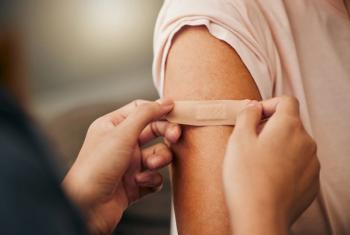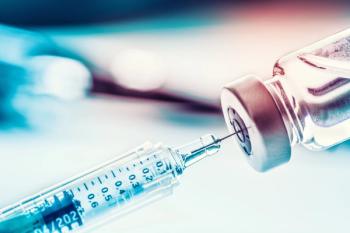
An Infected Finger: Child Abuse – or Mimic?
A 3-year-old child was brought to her primary caregiver by her maternal grandmother who was concerned about the infected lesion shown here. The child was at the center of a heated custody dispute and abuse was strongly suspected. But could the lesion’s origin be something else?
A 3-year-old child was brought to her primary caregiver by her maternal grandmother. The child was a frequent patient at the indigent clinic, and it was well established that she was at the center of a heated custody dispute. The grandmother often provided care for the child and usually accompanied her to the clinic. The grandmother reported she had not seen the child for 7 to 10 days. Before this visit, the grandmother could not recall anything wrong with the child’s hand. She reported that when the child was dropped off to her on this day, she noticed this lesion (Figure 1) on the child’s hand. The mother allegedly stated that the lesion had appeared after a 2-day visit with the father (which had ended the day before).
The mother was called to complete the history but she was unavailable. When the grandmother was questioned about a possible cigarette burn, she stated the mother did not smoke but she thought the father might. The grandmother also verbalized her concern regarding the mother’s apparent lack of interest in treating the injury.
The lesion was 8 to 9 mm in diameter. There was cratering in the center of the lesion with a rolled border. There were no other similar lesions on any other body surface. The minimal bruising that was noted on exam was felt to be consistent with normal childhood bruising. The child did not say anything about the lesion.
Figure 1.
Initial visit.
The case was reported as a possible burn to Child Protective Service (CPS). The family was well known to CPS. There had been other reports of possible abuse but none had ever been substantiated.
Has this child been abused, or is there another explanation that mimics physical abuse?
Answer: Cigarette burn
Discussion
A cigarette burn was strongly suspected. A cigarette burn is usually 8 to 10 mm; the wound is cratered, indicating that the burn is more severe in the center. This is because a cigarette burn is hotter at its center. Also, inflicted burns are round. Accidental burns generally involve a glancing blow and therefore assume an irregular shape.
In case reports of cigarette burns in abuse, most are reported on hands and feet. Accidental burns are more often on the face, neck or hands.
One must always consider what other conditions could look similar to this lesion. These include infection (bullous impetigo), moxibustion, and traumatized insect bites.
The intriguing thing about this case was the mother’s response. Normally in a custody battle, the mother would be calling attention to an injury-which in this child’s case allegedly occurred during visitation with the father-in the hope of gaining custody. The other concerning issue was that there was no blister to indicate a recent burn as alleged.
CPS found that neither the mother nor the father smoked. The mother later confessed that her boyfriend had burned the child “accidently” when she was threatened with the loss of her children. Another child living in the home also had possible burns. The second child was referred back to the primary care clinic and the lesions were documented. This child identified the boyfriend as the abuser but implicated the mother as well. The boyfriend ultimately confessed to burning the children with a cigarette.
Unfortunately, a clear answer is not always determined in abuse cases. This case ended well, with confirmation of the action by a child victim and with a confession by the perpetrators.
Follow-up is essential when etiology is uncertain. Typically a burn, from a cigarette or another source, takes several weeks to resolve compared to other conditions included in a differential diagnosis. In this case, the burn healed well in 4 to 6 weeks and resulted in a small scar (Figure 2).
Figure 2.
Follow-up at 4 to 6 weeks.
References:
For More Information:
Faller-Marquardt M S, Pollak S, Schmidt U. Cigarette burns in forensic medicine Forensic Sci Int. 2008;176:200-208.
Sibert JR, Maguire SA, Kemp MA. How good is the evidence available in child protection? Arch Dis Child. 2007;92:107-108.
Newsletter
Access practical, evidence-based guidance to support better care for our youngest patients. Join our email list for the latest clinical updates.











